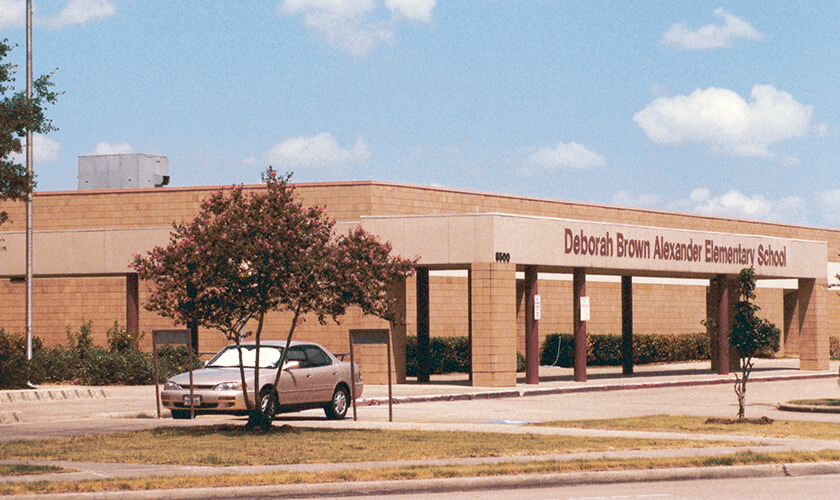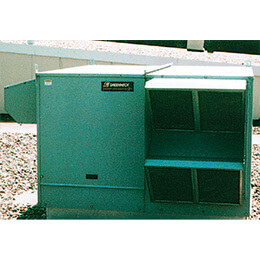Project Profile: Alexander Elementary School

The Challenge
- Comply to ventilation codes
- Control indoor humidity
- Recommend cost- effective solution
Like many schools constructed in the early 1980s, Alexander Elementary was designed to conserve energy. One energy saving approach the industry endorsed at that time was to reduce the outdoor air ventilation to 5 cfm per person, thereby reducing the amount of energy needed to condition the outdoor air. Unfortunately, that effort to save energy in the 1980s prevented the school from meeting ventilation codes in 1997. ASHRAE Standard 62-89 now prescribes 15 cfm per student. Houston’s code can require even more outdoor air depending on the school design.
To comply with the local code, the Alief Independent School District needed to quadruple the amount of outdoor air entering the Alexander school. The district also wanted a reliable ventilation solution that would fit its budget, be easy to maintain and help control indoor humidity — always an important concern in the humid Houston climate.
Greenheck’s Solution
The HVAC engineering firm of Stephen M. Redding P.E., Inc. determined that the most cost-effective and efficient solution for the school district would be to add several Greenheck rotary energy recovery ventilators into the existing system. Five roof mounted Greenheck ERVs were selected to provide 20,215 cfm of outdoor air to the school or approximately 20 cfm per student. Four ERVs served the classrooms and one met the needs of the gymnasium and cafeteria. Existing air handlers and chillers were used, and installation required little additional ductwork to connect the ERVs to the return ducts.
The installed ERVs pre-condition the outdoor air by recovering energy from air
being exhausted from the school. Enthalpic energy recovery efficiencies typically range from 70%-80%. The preconditioned outdoor air is then injected into the return duct and supplied to the room spaces using the existing air distribution system.
Data for the gymnasium /cafeteria ERV unit quantifies both sensible and latent energy transfer performance. Outdoor air volume is 4,900 cfm and exhaust air volume is 4,345 cfm. Summer design was 95 DB/78 WB for outdoor air and 75 DB/62 WB room air. At 75% effectiveness, the ERV leaving temperatures were 80 DB/67 WB reducing the air conditioning load by 18 tons. At winter design, the ERV heats the outdoor air from 20 DB to 59 DB.
The Results
Since initial operation in August, 1997, CO2 levels have been reduced by 50% from peak occurrences of 1,800 ppm to 900 ppm. Indoor humidity levels consistently match the design objectives of 50% +-5%. “Students and teachers have noticed a significant improvement in indoor air quality,” says Alief ISD Energy Manager Mathew Browne.
Without the ERVs, 68 additional tons of air conditioning would have been required. That savings nearly offset the initial cost of the ERVs, and when you consider that the school will save over $9,500 annually in reduced heating and cooling costs, the ERVs’ payback period is less than one year.
In addition to satisfying thermal performance, the Greenheck ERVs also met the requirements for low maintenance. Quality blowers and sturdy galvanized steel cabinetry assure reliable airflow performance. The self-cleaning, easy access enthalpy wheel transfers moisture in the vapor phase eliminating the need for a drain system. All that’s required for maintenance is changing the outdoor air filters periodically and conducting an annual inspection.
The school district is so impressed, it’s planning to retrofit three more schools with Greenheck ERVs. “Because of the positive results at Alexander Elementary, we have specified ERVs for other school districts with renovation and new construction projects,” said lead HVAC engineer Steve Redding.
In Conclusion

